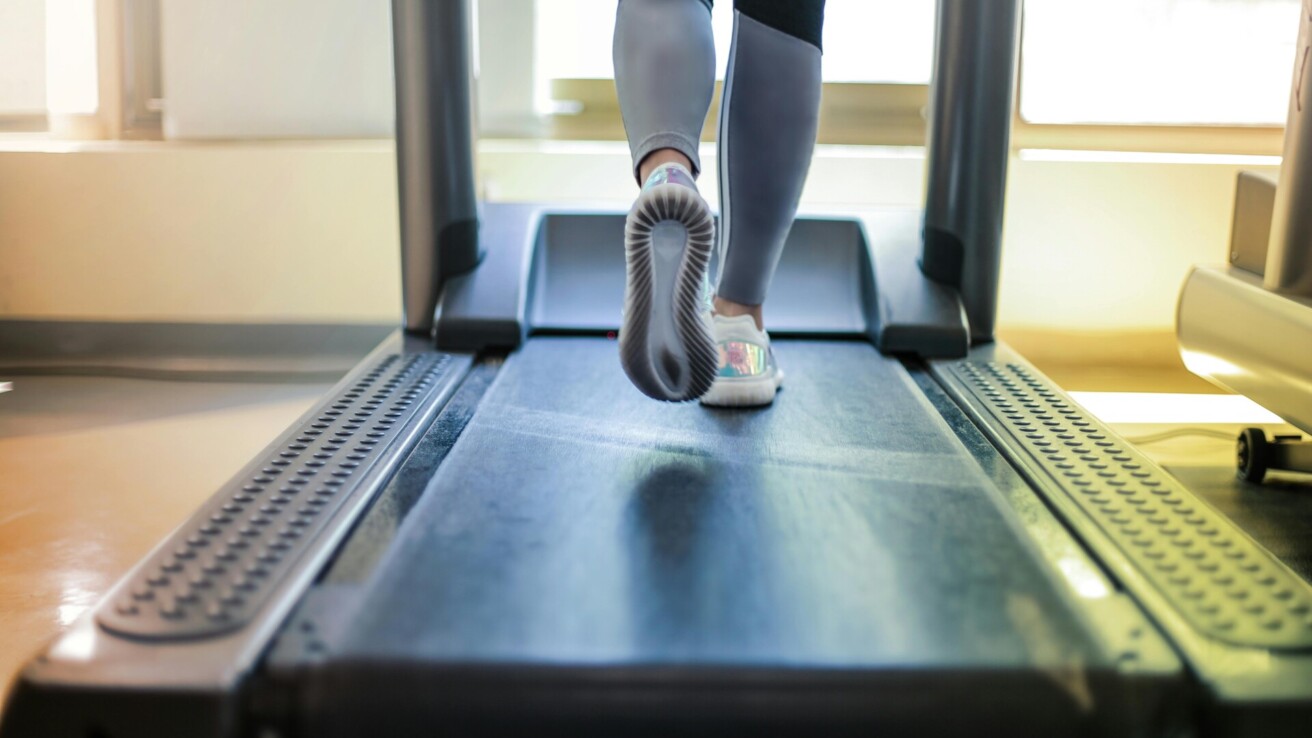You’ve got your rucking routine perfectly planned, but Mother Nature has other ideas. The rain is pouring, the wind is howling, and your favorite trail looks more like a mudslide than a training ground. That’s where treadmill rucking steps in as your all-weather training solution.
What makes treadmill rucking particularly appealing is its ability to deliver consistent results in a controlled environment. According to Ruck For Miles, it’s an easy-to-start, safe, and highly affordable way to build a healthy, strong, and injury-resistant body. You’ll get the benefits of outdoor rucking – cardiovascular conditioning, strength building, and calorie burning – without battling unpredictable weather or terrain.
Whether you’re a seasoned rucker looking for a reliable backup plan or someone just starting their fitness journey, treadmill rucking offers a unique blend of accessibility and effectiveness. It’s about having a consistent, measurable way to progress in your training while building real-world strength and endurance.
Let’s explore how you can use indoor rucking to enhance your fitness routine, regardless of what Mother Nature throws your way. After all, why should weather dictate your fitness progress?
Setting Up Your Treadmill for Rucking

Setting up your treadmill for rucking requires careful preparation and attention to detail. Follow these essential steps to create a safe and effective weighted walking environment that will enhance your fitness while preventing injury.
Establishing Your Base Settings
Begin with a comfortable walking speed between 2.5 and 3.5 mph – this range allows optimal form while carrying additional weight. Since your natural stride length shortens with a weighted pack, maintain this controlled pace rather than rushing to increase speed.
Set your initial incline between 2-3% to simulate outdoor terrain and engage your stabilizing muscles. This moderate grade provides effective resistance while allowing your body to adapt to the added weight.
Before starting, verify your treadmill’s weight capacity. Ensure the machine’s rating can support both your body weight and rucking pack weight combined.
Safety First: Critical Precautions
Attach the emergency stop clip to your clothing – this essential safety measure prevents accidents if you lose balance. Clear all obstacles within a 3-foot radius around the treadmill.
Research shows that proper form is essential when rucking on a treadmill. Maintain an upright posture, engage your core, and avoid leaning forward or gripping the handrails.
Place a sturdy chair or bench nearby for safe pack mounting and dismounting. This stable surface provides additional security during your workout setup.
Progressive Intensity Adjustments
After mastering the basic setup, increase intensity gradually by adjusting one variable at a time. Consider raising the incline by 1-2% or increasing speed in 0.2 mph increments.
Intermediate ruckers can explore inclines between 5-8% to simulate challenging terrain. Remember to reduce speed on steeper grades to maintain control and proper form.
Track your heart rate and perceived exertion during these adjustments. Aim for a challenging yet sustainable combination of speed, incline, and weight that maintains proper form throughout your session.
| Rucker Level | Warm-up | Main Workout | Cool-down |
|---|---|---|---|
| Beginner | 5 min, no weight | 20 min at 2.5 mph, 2% incline | 5 min, flat incline |
| Intermediate | 5 min, light weight | Alternate 5 min at 3.5 mph, 4% incline and 5 min at 2.5 mph, 8% incline | 5 min |
Treadmill Rucking Workouts for Different Fitness Levels
Ready to take your rucking journey indoors? Whether you’re just starting out or looking to challenge yourself further, these structured treadmill rucking workouts will help you build strength, endurance, and mental toughness. Here are workout plans tailored to every fitness level.
Beginner Treadmill Rucking Workouts
If you’re new to rucking, start with these foundational workouts. Begin with a weight that’s roughly 10% of your body weight – for a 150-pound person, that’s about 15 pounds in your ruck.
For your first workout, complete a 30-minute session structured as follows: 5-minute warm-up with no weight, followed by 20 minutes at 2.5 mph with a 2% incline, and a 5-minute cool-down. Focus on maintaining proper posture and getting comfortable with the weighted pack.
As you build confidence, try this progressive beginner workout: alternate between 5 minutes of flat walking at 3 mph and 5 minutes at a 3-4% incline. Complete 3-4 cycles, maintaining proper form throughout.
Intermediate Rucking Challenges
Ready to increase the intensity? According to rucking experts, intermediate ruckers can safely carry 15-20% of their body weight while maintaining good form.
A solid intermediate workout spans 45 minutes: Begin with a 5-minute warm-up, then alternate between 5 minutes at 3.5 mph on a 4% incline and 5 minutes at 2.5 mph on an 8% incline. Repeat this pattern four times, followed by a 5-minute cool-down.
Another effective intermediate session features pyramid intervals: Start at 2% incline, increasing by 2% every 5 minutes until you reach 10%, then work your way back down. Maintain a steady pace of 3-3.5 mph throughout.
Advanced Rucking Workouts
For seasoned ruckers seeking a serious challenge, these workouts will test your limits. Advanced ruckers can handle up to 25% of their body weight, but only with perfect form throughout the session.
Try this intense 60-minute workout: Begin with a 10-minute warm-up at 3.5 mph. Then alternate between 5 minutes at 4 mph with a 5% incline and 3 minutes at 3 mph with a 10% incline. Complete 6 cycles, finishing with a 7-minute cool-down.
For maximum endurance building, tackle this advanced challenge: 75 minutes total, carrying your target weight, alternating between 10 minutes at 3.5 mph on a 6% incline and 5 minutes at 3 mph on a 12% incline. Complete this cycle 5 times.
| Time | Speed Category | Speed (Km/h) | Incline (%) | Notes |
|---|---|---|---|---|
| 0-5 min | Warm-up pace | 4.8 | 0 | Get those muscles warmed up! |
| 5-10 min | Moderate pace | 5.6 | 2-3 | Find your rhythm and settle in. |
| 10-15 min | Brisk pace | 6.4 | 5 | Time to pick up the intensity. |
| 15-20 min | Recovery pace | 4.8 | 0 | Catch your breath and reset. |
| 20-25 min | Incline climb | – | 8-10 | Engage your leg muscles with an uphill push |
| 25-30 min | Steady pace | 5.6 | 3 | Back to a moderate pace to finish strong. |
| 30-35 min | Cool-down pace | 4.0 | 0 | Wind down and stretch those muscles. |
Maximizing Calorie Burn and Strength Gains

Treadmill rucking offers a unique opportunity to amplify your calorie burn and build full-body strength in a controlled environment. According to research, a 180-pound person can burn approximately 696 calories during a one-hour treadmill ruck with a 21-42 pound pack, compared to 246 calories walking without weight.
For optimal results, select a weight that aligns with your fitness level and goals. Begin with 10-20% of your body weight, gradually increasing as your strength improves. This progressive approach ensures sustainable gains while minimizing injury risk.
Optimizing Incline for Maximum Benefits
The treadmill’s incline feature enhances calorie burn and muscle engagement effectively. Start with a modest 2-3% grade to establish proper form and build foundational strength.
As your fitness improves, experiment with intervals of 5-10% incline. These steeper grades activate your posterior chain muscles more intensely, particularly your glutes, hamstrings, and calves. Each 1% increase in incline significantly boosts calorie burn.
Remember to maintain proper posture when tackling inclines – lean slightly forward from your ankles while keeping your core engaged and shoulders back.
Duration and Intensity Strategies
Structure your workouts with strategic intervals to maximize calorie burn and strength gains. A study by the Journal of Sports Science and Medicine found that participants preferred steady-state training over high-intensity intervals for rucking.
Start with 20-30 minute sessions at a sustainable pace of 3-4 mph. As your endurance builds, extend duration gradually while maintaining proper form. Your breathing should be controlled but challenging.
For enhanced results, incorporate pyramid intervals: alternate between 2-minute periods of increased speed or incline, followed by 1-minute recovery periods at baseline settings.
Monitoring Progress and Adaptation
Track your workouts meticulously to ensure progressive overload. Key metrics include total duration, average speed, incline variations, and weight carried. These measurements help optimize future sessions for continued improvement.
Monitor how your body responds and adapts. When you consistently complete workouts without significant fatigue, increase either weight, incline, duration, or speed – modifying only one variable at a time.
Maintain a perceived exertion level of 7-8 out of 10 during challenging portions of your workout. This intensity optimizes both calorie burn and strength development while remaining sustainable.
| Incline Level (%) | Calorie Burn Increase (%) |
|---|---|
| 0% (flat) | Baseline |
| 5% | 17% |
| 10% | 32% |
| Moderate levels | 50% or more |
| Steeper inclines | Up to 113% |
Overcoming Common Challenges in Treadmill Rucking
Transitioning from outdoor rucking to a treadmill creates unique challenges, but with the right approach, you can maintain an effective workout. Here are the most common obstacles and their solutions.
Maintaining Proper Form and Posture
The controlled environment of a treadmill makes it easier to focus on form, but proper technique remains crucial. Keep your shoulders back, chest up, and maintain an engaged core throughout your session.
Take slightly shorter steps than you would outdoors to prevent overstriding, which is a common issue on treadmills. Your steps should feel natural and controlled, landing near your heel and rolling through to your toe.
Remember to check your posture periodically – a quick form reset every few minutes prevents the slouching that often occurs during longer sessions. If you catch yourself leaning forward, readjust your pack and straighten your spine.
Combating Workout Monotony
Indoor rucking can feel repetitive, but several strategies can keep your sessions engaging. Mix up your workout by incorporating interval training with varying speeds and inclines, simulating natural terrain changes you’d experience outdoors.
Consider using entertainment options – listening to podcasts, audiobooks, or creating specific workout playlists can make sessions more enjoyable. Many modern treadmills offer built-in screens for watching shows or following virtual trails.
Try setting specific goals for each session, such as maintaining a certain pace for increasing durations or gradually working up to steeper inclines. Clear objectives help maintain focus and provide a sense of accomplishment.
Equipment Adaptations and Limitations
While you might miss the variety of outdoor terrain, modern treadmills offer features to enhance your workout. Most treadmills have pre-programmed workouts that simulate hill climbs and varied terrains – use these to challenge yourself.
Ensure your rucksack fits properly and doesn’t interfere with the treadmill’s safety features. A well-fitted pack should sit snugly against your back, with weight distributed evenly to maintain balance on the moving belt.
Consider using a treadmill with a wider belt for additional stability, especially when carrying heavier loads. This extra space allows for natural arm swing and helps prevent accidental contact with the treadmill frame.
| Aspect | Outdoor Rucking | Treadmill Rucking |
|---|---|---|
| Environment | Unpredictable weather and terrain | Controlled indoor environment |
| Surface | Varied, natural terrain | Even, cushioned surface |
| Joint Impact | Higher impact due to uneven surfaces | Lower impact, softer on joints |
| Fresh Air and Sunlight | Exposure to fresh air and natural sunlight | Limited air circulation and no sunlight |
| Weather Constraints | Affected by weather conditions | Not affected by weather |
| Progress Tracking | Manual tracking required | Built-in metrics for tracking |
Conclusion: Embracing the Versatility of Treadmill Rucking

Treadmill rucking stands out as an effective addition to any fitness routine, combining convenience and results for both beginners and seasoned athletes. The controlled indoor environment allows focused attention on form and progression without weather disruptions.
The beauty of treadmill rucking lies in its customizable nature. With precise control over speed, incline, and duration, you can tailor workouts to your specific fitness goals while tracking progress through built-in metrics. This control creates an ideal starting point for those new to weighted training.
Beyond its practical benefits, treadmill rucking offers an excellent low-impact cardio option that builds strength and endurance simultaneously. The cushioned surface minimizes joint stress compared to outdoor terrain, making it especially suitable for those recovering from injury or seeking gentler workout alternatives.
Significantly, treadmill rucking eliminates common barriers to consistent training. Whether facing extreme weather, time constraints, or safety concerns, the indoor option ensures uninterrupted fitness progress. As detailed in a comprehensive guide by Ruck Living, this adaptability proves invaluable for maintaining training consistency.
Your fitness journey is unique, and treadmill rucking adapts to your personal goals and circumstances. Whether beginning your fitness journey or complementing outdoor training, the treadmill offers a reliable platform for building strength, endurance, and confidence in a controlled setting.







